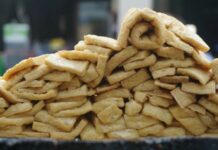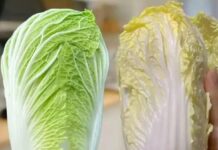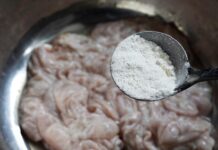Vietnam is a country with a long history and rich cultural heritage that has been passed down through the ages. Every Lunar New Year, families perform rituals to pray for a peaceful new year, and the Ngoc Hoang Via Ceremony is one of them.
But what is the Ngoc Hoang Via Ceremony? What is the significance of this day, and how is it properly celebrated? Join us as we delve into these questions and more!
1 What is the Ngoc Hoang Via Ceremony?
The Ngoc Hoang Via Ceremony, also known as the Cung Via Troi or Heaven Worship Ceremony, takes place on the 9th day of the first lunar month each year. This ritual originates from the cultural beliefs of Vietnamese people with Chinese roots.

The number 9 is chosen for this ceremony as each digit from 1 to 9 holds a special meaning:
- Number 1: Represents the greatness and vastness of creation.
- Number 2: Symbolizes heaven and earth.
- Number 3: Signifies the trinity of heaven, earth, and humanity.
- Number 4: Represents the four elements of nature: sun, moon, stars, and spirits.
- Number 5: Embodies the five elements of the universe: metal, wood, water, fire, and earth.
- Number 6: Signifies the harmony of heaven and earth, as well as the four directions: east, west, south, and north.
- Number 7: Represents the Big Dipper constellation.
- Number 8: Stands for the eight trigrams: Qian, Kun, Kan, Li, Zhen, Xun, Dui, and Gen.
- Number 9: Expresses the nine directions of the sky and the vastness of the universe.
Thus, the number 9 is chosen as it is believed that only Ngoc Hoang possesses the power to govern heaven, earth, and all living things.
Related: Discover the unique New Year traditions of Vietnam’s three regions.
2 Significance of the Ngoc Hoang Via Ceremony on the 9th Day of Tet
The Ngoc Hoang Via Ceremony holds profound spiritual significance beyond a mere ritual. The new year marks a fresh beginning, a time of hope and renewal for all things.
 Significance of the Ngoc Hoang Via Ceremony
Significance of the Ngoc Hoang Via Ceremony
People offer prayers for blessings, good health, luck, and success in their endeavors. For farmers, it is an opportunity to beseech the heavens for favorable weather and a bountiful harvest.
3 How to Perform the Ngoc Hoang Via Ceremony on the 9th Day of Tet
Timing of the Ceremony
According to traditional beliefs, the Ngoc Hoang Via Ceremony should be performed during the Ty hour (between 11 PM and 1 AM), marking the start of a new day before sunrise.
Offerings for the Ceremony
The offerings for the Ngoc Hoang Via Ceremony typically include the following:
-
Incense
-
Candles
-
Fresh flowers
-
Tea and other offerings.
These offerings are known as the “Luc Le”, which consists of incense, candles, flowers, tea, fruit, and special offerings. The first three elements, incense, candles, and flowers, can be prepared in a similar manner to other rituals.
 Offerings for the Ngoc Hoang Via Ceremony
Offerings for the Ngoc Hoang Via Ceremony
The “tea” offering differs from other rituals in that it must be green tea served in 9 small cups or bowls as an offering to Ngoc Hoang.
The most distinctive element of the “Luc Le” is the “special offerings,” which differ significantly from other rituals. Typical offerings include cassava starch, bang kim powder, and more. It is recommended to use an odd number of items, such as 5, 7, or 9.
 Sugar tower and cane offerings for Ngoc Hoang
Sugar tower and cane offerings for Ngoc Hoang
Additionally, cane and a sugar tower are prepared for the ceremony. The paper offerings should include gold ingots and a pair of paper boxes, one yellow and one silver.
 Incantation for the Ngoc Hoang Via Ceremony
Incantation for the Ngoc Hoang Via Ceremony
Incantation for the Ceremony
An essential component of the ritual is the incantation, which must be prepared carefully and recited with sincerity for it to be effective and reach Ngoc Hoang. Here is an example:
“Nam mo a di da phat
Nam mo a di da phat
Nam mo a di da phat
We invite the Heavenly Emperor, Ngoc Hoang Thuong De, the King of the Eighth Sea, the King of the Water Realm, and the Council of Kings. We invite the Southern and Northern Dipper, the Four Heavenly Kings, and the Celestial Dragon Guardians.
We invite the Five Princes and the Five Immortal Elders.
We invite the Queen Mother of the Heavens, the Woodworking Goddess, the Eighth Sea Goddess, the Water Goddess, and the Ninefold Heaven Goddess.
We invite the Medicine Master Buddha, Shakyamuni Buddha, and the Lord of the Pure Land of Ultimate Bliss. We invite the Goddess Quan Am and the Bodhisattva Quan Am. We invite the Buddha Hoang Tran Nhan Tong and countless other Buddhas, Bodhisattvas, Arhats, and Dharma Protectors.
We invite the Kings, Queens, Lords, and Ladies. We invite the First, Second, and Third Mothers.
We invite the Four Palaces’ Ladies, the Four Palaces’ Spirits, the Dragon Gods, and the Heavenly Saints.
We invite the Gods of Heaven, the Gods of Earth, the Gods of Mount Tan Vien, the Gods of Great Way, the Holy Boys and Girls, and the Spirits of the Mountains and Rivers.
We invite the local gods, the gods of the land, the gods of the soil, the gods of wealth, and the gods of the hearth who govern … (address).
We invite the ancestors of the paternal or maternal (husband’s) lineage, the ancestors of the family, the ancestors of the clan, the ancestors of the clan, the ancestors of the clan, the ancestors of the clan, the ancestors of the clan, and the ancestors of the clan. the red boys and girls.
Today is the … day of the … month of the … year. We offer incense and humble offerings with sincerity to Heaven, Buddha, and the Holy Spirits.
We pray for their protection and blessings, for harmony in our relationships, and for the support of our friends and loved ones. May our endeavors be blessed with smooth sailing. May our homes be filled with peace and happiness, our children with health and prosperity, and may we have the means to do good deeds, accumulate merit, and bring honor to our ancestors and lineage.
We humbly offer these humble offerings and prayers, hoping that the Holy Spirits will accept them.
Nam mo a di da phat
Nam mo a di da phat
Nam mo a di da phat”
For further guidance, you may refer to additional resources on Tet rituals and their significance.
We hope that this article has provided you with valuable insights into one of Vietnam’s traditional Tet customs. Thank you for joining us, and we wish you a happy and prosperous new year!






























